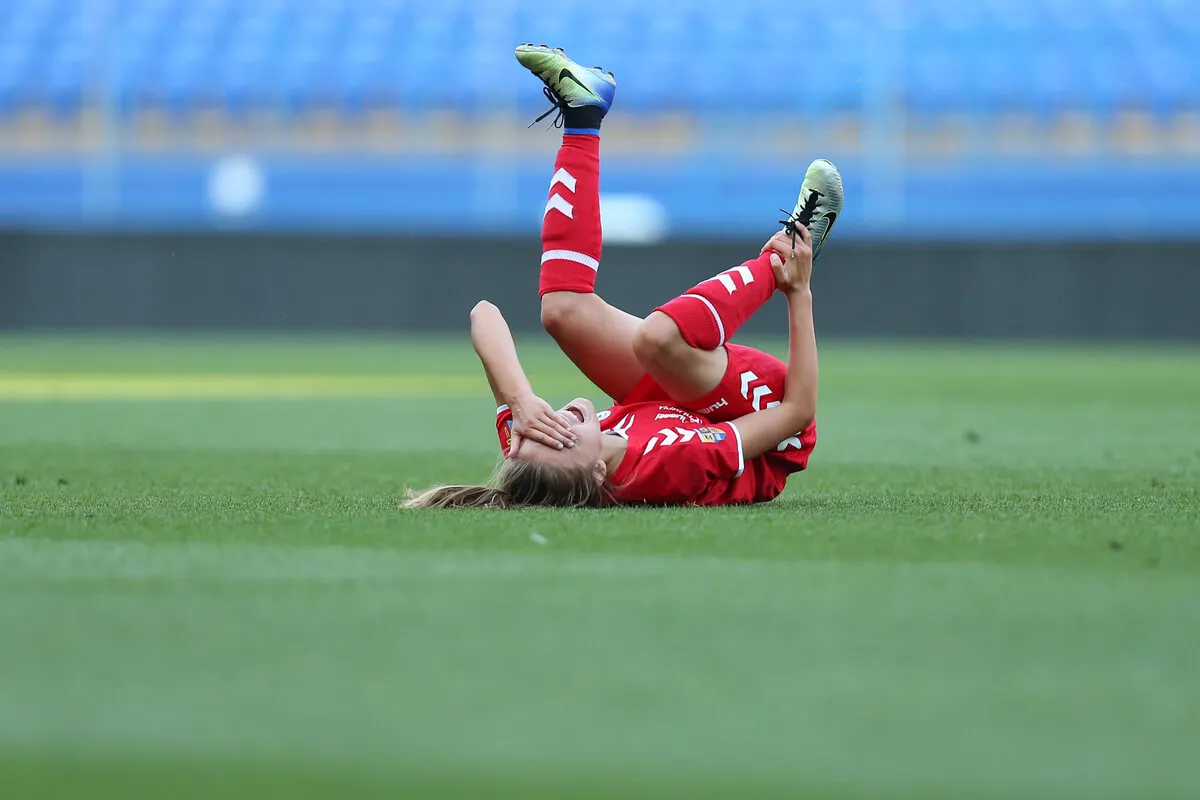The Treatment and Recovery for Alexia Putellas' Anterior Cruciate Ligament Rupture


Written and verified by the doctor Leonardo Biolatto
The news of soccer star Alexia Putellas’ anterior cruciate ligament rupture shocked soccer. With the Spanish national team’s debut at the Women’s European Championship almost just around the corner, the best player in the world will be absent.
As the Ballon d’Or winner and praised by all, everyone wanted to see her in action. However, one of the most feared injuries among female soccer players has cut short the dream.
How serious is the rupture of the anterior cruciate ligament suffered by Alexia Putellas? The severity is not minor, and the recovery time is long. We’ll explain it better in this article.
What happened to Alexia Putellas?
The star of the Spanish women’s national soccer team was reportedly injured in training. While her team is in England to dispute the Women’s Euro 2022, she will have to miss the matches.
The Royal Spanish Football Federation(RFEF) released an official statement to clarify that Alexia Putellas’ problem was a rupture of the anterior cruciate ligament and that she was already under medical supervision:
Tests carried out on the Spanish international on Tuesday afternoon, July 5, 2022, at King Edward VII’s Hospital in London, have confirmed a rupture of the anterior cruciate ligament in her left knee. -RFEF
This diagnosis implies months without activity for the athlete. Regardless of the treatments proposed and the success they may have, the halt in her career will be notorious.
We think you may also enjoy reading this article: The Women’s EURO Cup: Female Soccer Players Capture the World’s Attention
Women footballers suffer from more knee injuries
Statistics show that knee ligament injuries are more frequent among women footballers than among men who play the same sport. And this is increasingly the subject of debate among sports medicine specialists.
Is there anything that can be done to balance the statistics? Are there factors that make women more prone to these injuries?
In theory, the hormonal issue is decisive. In the days leading up to ovulation, which would be between days 11 and 14 of a regular menstrual cycle, women are more prone to torn ligaments. This has been shown by research from 2021.
In relative terms and covering all sports, we know that women injure the anterior cruciate ligament of the knee up to four times more than men. However, as events also occur at other times of the menstrual cycle, more hypotheses have been put forward.
Some authors, after investigating the biomechanics of the female knee, found that the anterior cruciate ligament in women is smaller than that of men. In addition, the female bones have a different structure and a way of relating to each other, in the middle of the movement, which would favor the injuries on the ligaments.

How are these injuries treated?
In elite soccer players with a significant rupture of the anterior cruciate ligament of the knee, as would be the case of Alexia Putellas, the approach will be surgical. Medical and physical measures are not sufficient to return an athlete to the field.
Here are the most common options. If there’s an avulsion fracture that accompanies the ligament tear (i.e. a portion of the ligament “took” bone with it when it detached), then a repair of the area will be done.
The most common procedure, in fact, is to do a reconstruction of the torn ligament with a graft. This portion that will replace the damaged tissue can come from the patient herself (from a part of the patellar tendon, for example) or from a cadaveric donor (in which case it’s called an allograft).
Unfortunately, the recurrence and relapse rate is quite high. Many times, athletes re-injure their knee after resuming activity or find that they do not have the same functionality in their lower limbs.
In order to prevent complications, various options have been tried regarding the ideal time to operate. Some experts advocate an immediate intervention, although more and more people opt to wait for a prudential time for the inflammation to go down and for the tissues to heal better afterwards.
Perhaps the least desirable complication in professional soccer players is knee instability. This refers to an inability of the joint to maintain the weight of the body when running, which greatly hinders the game.

Like this article? You may also like to read: Kylian Mbappé: The Rigorous Exercise and Diet Routine of Soccer’s Next Big Star
What will Alexia Putellas’ recovery plan be after her cruciate ligament surgery?
Once operated on, Putellas will have to follow a strict rehabilitation plan if she wants to return to the field in good condition. A publication in the British Journal of Sports Medicine sets out the average timescales envisaged for each phase:
- Small isometric exercises in the first week, accompanied by a support of the operated leg (but without direct weight bearing).
- During the first month after surgery, she’ll need to make passive movements with the injured knee. A professional guides the joint as she does this so that it doesn’t remain still, and weight bearing can be attempted. Crutches, or at least one of the crutches, may be removed by the end of the first month.
- In the second month, eccentric exercises are started to tone the muscles of the limb. The idea is to walk without support. Proprioception work can also be added.
- The third month is for muscle power. The patient can get on an exercise bike to give dynamism to the movements.
- In the fourth month, she should have a successful healing, so the intensity of her rehabilitation exercises will be increased.
After this last stage, the athlete can consider returning to light sporting activity while repeating the training gestures, but without exposing themselves to further injury. Rehabilitation isn’t finished at this point.
So, it’s worth saying that the rest of the year will be very difficult for Alexia Putellas’ knee and for her anterior cruciate ligament. Even though she’s being monitored by the best professionals in the field, she’s still a patient going through one of the worst injuries in the soccer world.
All cited sources were thoroughly reviewed by our team to ensure their quality, reliability, currency, and validity. The bibliography of this article was considered reliable and of academic or scientific accuracy.
- Martin, Dan, et al. “Injury incidence across the menstrual cycle in international footballers.” Frontiers in sports and active living 3 (2021): 616999.
- Leyes, Javier Yanguas, Lluís Til Pérez, and Cristina Cortés de Olano. “Lesión del ligamento cruzado anterior en fútbol femenino. Estudio epidemiológico de tres temporadas.” Apunts. Medicina de l’Esport 46.171 (2011): 137-143.
- Romero-Moraleda, Blanca, et al. “Revisión de los factores de riesgo y los programas de prevención de la lesión del ligamento cruzado anterior en fútbol femenino: propuesta de prevención.[Review risk factors and prevention programs of the anterior cruciate ligament injury in female football: prevention proposal].” RICYDE. Revista Internacional de Ciencias del Deporte. doi: 10.5232/ricyde 13.48 (2016): 117-138.
- Vaquero Martín, J., J. A. Calvo Haro, and F. Forriol Campos. “Reconstrucción del ligamento cruzado anterior.” Trauma (Majadahonda) (2008): 22-38.
- van Melick, Nicky, et al. “Evidence-based clinical practice update: practice guidelines for anterior cruciate ligament rehabilitation based on a systematic review and multidisciplinary consensus.” British journal of sports medicine 50.24 (2016): 1506-1515.
This text is provided for informational purposes only and does not replace consultation with a professional. If in doubt, consult your specialist.








